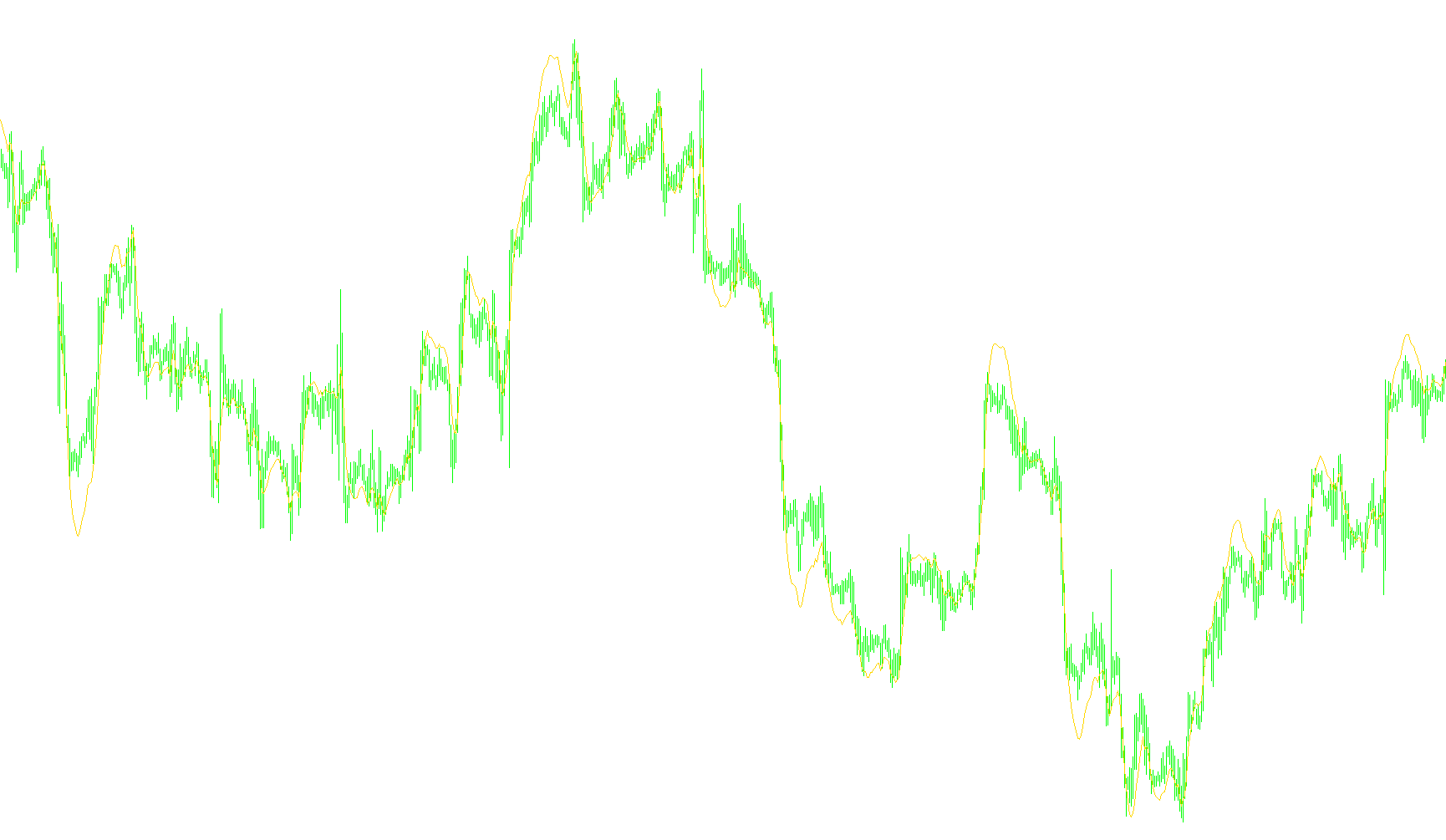
//+------------------------------------------------------------------+
//| EMAPredictive3.mq4 |
//| Matthew ("Dr Chaos") Kennel |
//| ftp://lyapunov.ucsd.edu/pub/nonlinear |
//+------------------------------------------------------------------+
//
// Goal of this indicator:
//
// Given three EMA's of varying lengths, use their values
// for a estimator of "where we are now" or will be in the near future.
// This is a very simplistic method, better ones are probably found
// in the signal processing and target tracking literature.
// A Kalman filter has been known since the 1950's 1960's and there
// is better still. Nevertheless this is easily programmable in the
// typical environments of a retail trading application like Metatrader4.
//
// Method:
//
// An an exponential moving average (EMA) or a simple moving average (SMA), for that
// matter, have a bandwidth parameter 'L', the effective length of the window. This
// is in units of time or, really, inverse of frequency. Higher L means a lower
// frequency effect.
//
// With a parameter L, the weighted time index of the EMA and SMA is (L-1)/2. Example:
// take an SMA of the previous 5 values: -5 -4 -3 -2 -1 now. The average "amount of time"
// back in the past of the data which go in to the SMA is hence -3, or (L-1)/2. Same applies
// for an EMA. The standard parameterization makes this correspondence between EMA
// and SMA.
//
// Therefore the idea here is to take two different EMA's, a longer, and
// a shorter of lengths L1 and L2 (L2 <L1). Now take the pairs:
// [ -(L1-1)/2, EMA(L1) ] [ -(L2-1)/2, EMA(L2) ] which defines a line.
//
//
// Extrapolate to [ExtraTimeForward, y], solve for y and that is the predictive EMA estimate.
//
// Application:
// Traditional moving averages, as simple-minded linear filters, have significant group delay.
// In engineering that isn't so important as nobody cares if your sound from your iPod is delayed
// a few milliseconds after it is first processed. But in markets, you can't
// trade on the smoothed price, only the actual noisy, market price now. Hence you
// ought to estimate better.
//
// This statistic (what math/science people call what technical analysts call an 'indicator')
// may be useful as the "fast" moving average in a moving average crossover trading system.
// It could also be useful for the slow moving average as well.
//
// For instance, on a 5 minute chart:
//
// try for the fast: (will be very wiggly, note)
//
// LongPeriod 25.0
// ShortPeriod 8.0
// ExtraTimeForward 1.0
//
// and for the slow:
//
// LongPeriod 500.0
// ShortPeriod 50.0 to 200.0
// ExtraTimeForward 0.0
//
// But often a regular MA for the slow can work as well or better, it appears from visual inspection.
//
// Enjoy.
//
// In chaos there is order, and in that order there is chaos and order inside again.
//
// Then, surrounding everything, pointy haired bosses.
//
#property copyright "Matthew (Dr Chaos) Kennel"
#property link "ftp://lyapunov.ucsd.edu/pub/nonlinear" // my academic software site. No finance.
#property indicator_chart_window
#property indicator_buffers 1
#property indicator_color1 Red
//---- input parameters
extern double LongPeriod=25.0; // note that for an EMA you can have floating point numbers.
extern double ShortPeriod=8.0;
extern double ExtraTimeForward=1.0; // how much to further extrapolate location.
//---- buffers
//---- indicator buffers
double ExtBuffer[];
//+------------------------------------------------------------------+
//| Custom indicator initialization function |
//+------------------------------------------------------------------+
int init()
{
SetIndexBuffer(0,ExtBuffer);
//---- drawing settings
SetIndexStyle(0,DRAW_LINE);
//---- initialization done
return(0);
}
int start()
{
int limit;
int counted_bars=IndicatorCounted();
double ma1,ma3;
double p1,p3;
double t1,t3,t;
//---- check for possible errors
if(counted_bars<0) return(-1);
//---- last counted bar will be recounted
if(counted_bars>0) counted_bars--;
limit=Bars-counted_bars;
//---- main loop
p1 = 2.0/(LongPeriod+1.0);
p3 = 2.0/(ShortPeriod+1.0);
t1 = (LongPeriod-1.0)/2.0;
t3 = (ShortPeriod-1.0)/2.0;
t = ShortPeriod + ExtraTimeForward;
ma1 = Close[limit-1];
ma3 = ma1;
for(int i=limit-1; i>= 0; i--) {
//---- ma_shift set to 0 because SetIndexShift called abowe
double val = Close[i];
double slope1, predict;
ma1 = p1*val + (1.0-p1)*ma1;
ma3 = p3*val + (1.0-p3)*ma3;
slope1 = (ma3-ma1)/(t1-t3);
predict = ma3 + slope1*t;
ExtBuffer[i]=predict;
}
//---- done
return(0);
}
//+------------------------------------------------------------------+
Comments